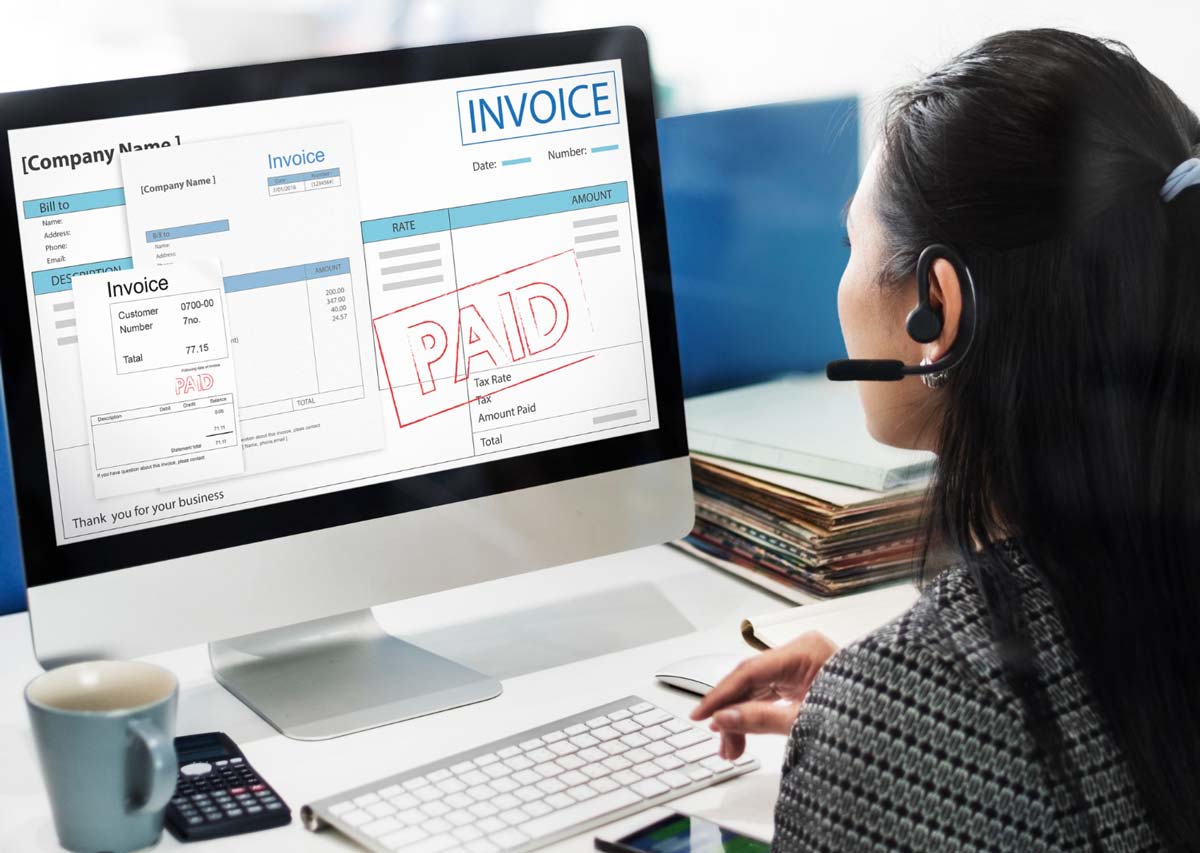Understanding the Accounts Receivable Process

Any company looking to turn a profit and become successful must have a robust accounts receivable process. That way, it's easier to manage your cash flow, determine who owed (and still owes) your business money, and figure out how much is due. That way, you can ensure that your cash accounts correctly reflect your company's financial standing. In addition, properly tracking your account receivable business processes gives you peace of mind knowing that your business is on solid financial footing.
What Is the Accounts Receivable Process?
Organizations rely on a structure called Accounts Receivable to keep up with any money due to them by customers. When a company agrees to take payment for goods or services later, that amount due gets marked as an accounts receivable asset. It's a high-level version of you lending money to a friend to pay back later.
In this case, customers have already received the product or service using credit extended by your company. Once they provide payment after issuing an invoice, you can debit that amount from accounts receivable and credit it to your cash account.
Implementing an automated solution to manage the accounts receivable process helps keep these transactions running smoothly. That way, you don't end up stuck with cash shortfalls because your business failed to account for any outstanding funds due from customers accurately. Your cash receivable accounts help you calculate your company's profitability and how much you've earned.
Best Practices for Managing the Accounts Receivable Process

Below are some basic steps in setting up and implementing an accounts receivable process for your business.
1. Figure out how to extend credit
The first thing you must do is figure out the boundaries of how you extend credit to customers. Some of the questions you should answer include:
- How to determine which customers are eligible to receive credit?
- Which transactions require immediate payment versus extending credit?
- What conditions do you need for a credit sale?
- Who's in charge of approving and overseeing credit for customers?
Failing to answer these questions immediately can lead to lax policies that cause payment delays or missed payments. Starting an accounts receivable process flow can help you account for any missing procedures that could lead to issues later.
2. Figure out how to bill customers
Once you establish credit for customers, you must notify them of the amounts due and the payment deadline. Most customers prefer waiting until they receive an invoice to confirm what they owe to a business before they start making payments. Organizations can opt to send out paper invoices, electronic invoices, or monthly statements as reminders.
Companies can't move forward in the accounts receivable process without setting up billing and invoicing. Putting in an automated system to handle that task is more efficient than having employees send invoices out manually.
3. Establish firm deadlines
Ensure you clearly outline your company's payment terms and customer due dates. Otherwise, they may forget to send out their payment, which means you can run short on cash flow. Any deadlines provided should correspond with the procedures established by your accounting and bookkeeping departments.
4. Document your accounts receivable process
Once you've set up your accounts receivable collection process, document each phase. That way, you can establish procedures to ensure your employees follow each step correctly. One way of doing that is by creating an accounts receivable process flow. Visualizing your accounts receivable business processes may be easier for your workers to track.
5. Log charges and expenses at the same time
Make sure you enter all receipts and orders as they're received. That way, the information's readily available when creating a customer invoice. If you get things out of balance, it can be hard for your staff to go back and try and match transactions together correctly for each customer.
Ideas on Improving the Accounts Receivable Process

Many organizations, especially small businesses, struggle with maintaining their accounts receivable business processes despite their best efforts. There's the challenge of processing initial credit applications and then promptly following up with customers for payment.
Manually tracking your accounts receivable tasks can become time-consuming and prone to human error. Therefore, many organizations use automated solutions like Integrify to manage the accounts receivable process.
Using automation to track the accounts receivable process helps organizations streamline the entire workflow. In addition, it allows companies to remove most of the manual labor, saving time and lowering operational costs.
Here are some other accounts receivable process improvement ideas to help you stay on top of any money that’s owed to your company.
- Create easily understood invoices — Avoid language or wording that might confuse customers.
- Include complete information — Your invoices should contain all information relevant to the customer for making payments.
- Communicate often — If your customers are late with payments, call or send a follow-up invoice reminding them of any amounts due. While you want to avoid harassing customers, don't let more than five business days go by without attempting to make contact.
- Provide options — Customers may run into hardships that make it more challenging to meet their obligations. Therefore, your accounts receivable process should have paths that allow some leeway for alternative payment arrangements to make things easier for customers.
Add Efficiency to Your Accounts Receivable Process
Integrify helps you become more productive by helping you create intuitive account payable business process flows for your company. You can eliminate the tediousness of paper-based signoffs and make creating reports about your company's health easier.
Learn more about the benefits of using Integrify to organize your accounts receivable business process by setting up a demo of Integrify.

